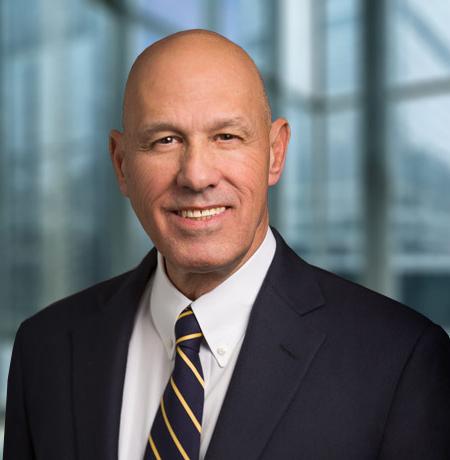In the early evening of Wednesday, June 5, 1974, in the visiting clubhouse of Tiger Stadium in Detroit, Oakland A’s outfielders Reggie Jackson and Billy North got into not one but two fistfights. During the second of the two battles, Jackson injured his shoulder when North threw Jackson into a metal dressing stall. Trying to break up the second fight, Catcher Ray Fosse separated a cervical disk that required surgery. According to the contemporaneous account by the Associated Press, Jackson said that he had been on bad terms with North for a month after accusing North of not hustling. In later years, North admitted to relentlessly baiting Jackson leading to the clubhouse fight.
This was by no means the only conflict on the A’s team that season. Players feuded with manager Alvin Dark, with third baseman Sal Bando saying Dark “couldn’t manage a meat market.” Players and the manager feuded with owner Charlie Finley. In the clubhouse the day before the opening of the 1974 World Series, pitcher Rollie Fingers threw a laundry cart at fellow pitcher Blue Moon Odom. We won’t repeat the remark of Odom’s that precipitated the attack.
The legendary conflict within the Oakland A’s during the early 1970s did not prevent the team’s success. Known as the Swingin’ A’s, the team won the World Series in 1972, 1973, and 1974, and won the American League West Division title five years in a row. It is even fair to ask whether the tendency toward conflict might have contributed to a spirit that fueled the team’s success.
The story of the 1970s Oakland A’s illustrates the complicated and important relationship between capability and compatibility in assessing individual and organizational professional effectiveness.
In the current environment, it is extremely hard to build and retain effective professional teams. Doing so requires a theoretical platform that helps leaders better understand what they are trying to accomplish and how to go about it. One framework for this assessment involves the relationship between two important curves: one that measures capability and the other that measures compatibility. What the Oakland A’s shows us about this relationship is that the desired points on these curves are by no means obvious.
Defining Capability and Compatibility
We have entered an age in which organizational success is closely tied to the organizational IQ of the professional team that you’ve accumulated. Over the past 30 or 40 years, the organizations that have had the greatest success are the smartest. Amazon, Microsoft, Apple, Meta, and Google are among the most obvious examples. These were smart organizations to start with. They came up with incredibly smart ideas. They were smart about executing. And then as they created a culture of smart, they continued to hire smarter and smarter people.
When you interview a candidate, you run through a series of questions about their capability, their smartness. How much do they know about the job that they’re being asked to do? How much experience do they have in doing that job? What is their track record of success? There's no doubt that when you interview different people for the same role, those people fall on very different places on the curve in those characteristics. Some people pop right out. They clearly are very smart. They clearly have a track record of success in that type of role.
Evaluating compatibility is perhaps more complex and in many cases more subjective. In business, compatibility can be seen as the extent to which a person works collaboratively within a team. At the highly compatible part of the curve would be people who thrive working with others, make everyone feel involved, and generate a solid outcome for their group. Moving toward the other end of the curve would be people who prefer to go their own way rather than to communicate and collaborate, and on the furthest point on the low end of this curve are those who actively and routinely create friction and conflict within the organization or otherwise make the lives of their colleagues more difficult, ultimately hurting the work product and perhaps even the success of the organization.
Applying the Capability/Compatibility Framework
On the face of it, applying this framework would seem straightforward. The relationship of capability and compatibility lends itself to a standard four-box chart, on which the upper right box is high capability and high compatibility, and the lower left box is low capability and low compatibility. Presumably, an organization would try to recruit and retain people in the upper right box and avoid people in the lower left box.
Unfortunately, the analysis is not that simple. It depends on the precise capabilities and the extent to which an organization at a particular point in its history may be willing to tolerate incompatibility to get a certain type of capability, the extent to which an individual’s capability level overcomes a deficit of compatibility and how that may change over time for that individual, and the organization’s culture and goals.
Consider Apple, certainly one of the two or three most successful organizations in the world over the previous several decades. Steve Jobs was Apple’s catalyst because his position on the capability curve was one of the highest in business history. However, he was legendarily low on the compatibility curve. In the early days of Apple, the kind of creativity and innovation that Jobs demonstrated was so important that the company was more than willing to accept low compatibility.
Jobs’ successor was Tim Cook. Cook brought his own type of very high capability, and he raised the compatibility factor significantly. Cook’s calming influence was essential as Apple dealt with the extraordinary operating and competitive complexity of today’s tech world.
Let's say an organization has historically valued very low annoyance and has been willing to sacrifice capability in order to have high compatibility. And let’s say that historically this organization has been reasonably successful financially and operationally. However, perhaps then the competition picks up and the chief executive and board don’t feel like the organization is doing as well as it ought to be doing. Then the organization has to reevaluate whether it doesn’t have sufficient high-capability talent because the organization has historically overemphasized this high-compatibility point of view.
This can also change when the CEO changes. Sometimes when a new CEO comes in and there are wholesale changes in the C-Suite, one of two things has happened. In one scenario, the CEO looked out into the organization and said, “It looks to me like what was really valued in this organization culturally was high compatibility, but we don't have enough high capability, which is why I've been brought in because the organization isn't doing very well. So I have to change the human resource culture of the organization to value high capability more than we valued it before.” In the other scenario, the CEO looked out into the organization and said, “Our lack of compatibility is disrupting the organization to the extent that we can’t operate effectively, can’t compete effectively, and can’t fulfill our mission. Some of this disruption comes from really smart people, but the level of incompatibility is outweighing any benefit we might be getting from their level of capability.”
Organizations are at different places at different times, and they need to be empathetic to these factors depending on where they are. There might be periods of time when you need to hire people who are really smart and do their best work alone. They’re not collaborative and they’re not cooperative, but they produce exactly the work and exactly the outcome that the organization needs at that moment. But flash forward three years, and that personality type may be much less effective within an organization that now has to execute in a way that needs people for whom the team sense is stronger.
Self-evaluation of capability and compatibility
Let’s face it. None of us is as smart as we may want to be. And none of us avoids rubbing others the wrong way at times. Our related levels of capability and compatibility are how others judge us and are central to how we influence our organizations. And those levels change over time. As business and technology issues evolve, it takes a serious effort to maintain a high level of capability. And as cultures change in the workplace and society as a whole, we may find ourselves grappling with definitions of compatibility that are nothing like those we understood earlier in our careers.
Executive self-awareness is extremely important in our environment right now, while 20 or 30 years ago you might have been able to have a perfectly good business career without being self-aware. Whether you’re looking for a new job, or whether you're in an existing situation, you are being assessed and you should be assessing yourself. Where is your capability curve, and what is your relationship at any given moment within the organization on the compatibility curve?
Assessing Collective Relationships
None of us wants the kind of open warfare that the Oakland A’s experienced in the early 1970s, but we would all love those three World Series rings. We all understand that the level of volatility experienced by the A’s is not sustainable, and although the A’s had an incredible run of success, perhaps the team would have had a more gradual but longer slope toward success if it had a different level of tolerance for incompatibility. We each have our own answer to the question of what level of volatility is worth tolerating for what level of success over what time period.
Executives need to ask themselves what kind of relationships they need for their particular organization at a particular point in time. How do you recognize that your cultural human resource process may have crossed over? Perhaps you had the right balance of capability and compatibility for what you were before, but now you’re not that anymore and you need a different combination. How do you recognize that? And then how do you deal with the changing factor that people are not the same people all the time? Did you hire somebody with a certain capability/compatibility relationship and then five years later find that the relationship has changed? All these curves add up to a collective relationship, and how does the CEO understand what collective relationship he or she needs at a given point in time? And how does each executive understand his or her own value over time and ensure that he or she is the leader the organization needs at each point in the organization’s progression?
In the 120 years during which Major League Baseball teams have competed in the World Series, only two teams won three or more successive championships. One team was, not surprisingly, the New York Yankees. (The Yankees won four championships in a row from 1936 to 1939, five in a row from 1949 to 1953, and three in a row from 1998 to 2000.) The only other team was none other than the Swingin’ Oakland A’s of the early 1970s.
Given the extraordinary, nearly unprecedented, run of success the A’s achieved in those years, and given the truly unusual makeup of the team, we must ask ourselves a question that may challenge some of our long-held and perhaps even cherished beliefs as leaders.
Is it possible that the A’s achieved their extraordinary success because the team tolerated a level of incompatibility that most teams—and most organizations of any kind—would never tolerate? Is it possible that the A’s success was not in spite of the personal conflicts, but actually as a direct result of the team organizing itself around a group of players with incredible capabilities who also happened to be associated with an extraordinary level of incompatibility, and were able to successfully manage through the resulting discord?
We suggest that this question is worth serious reflection for leaders of any organization aspiring to a world-class level of success.










